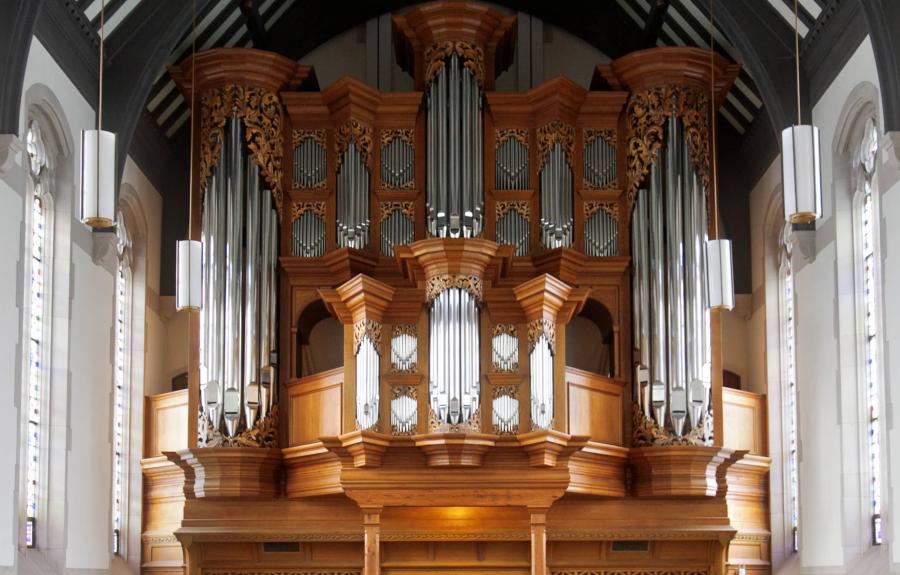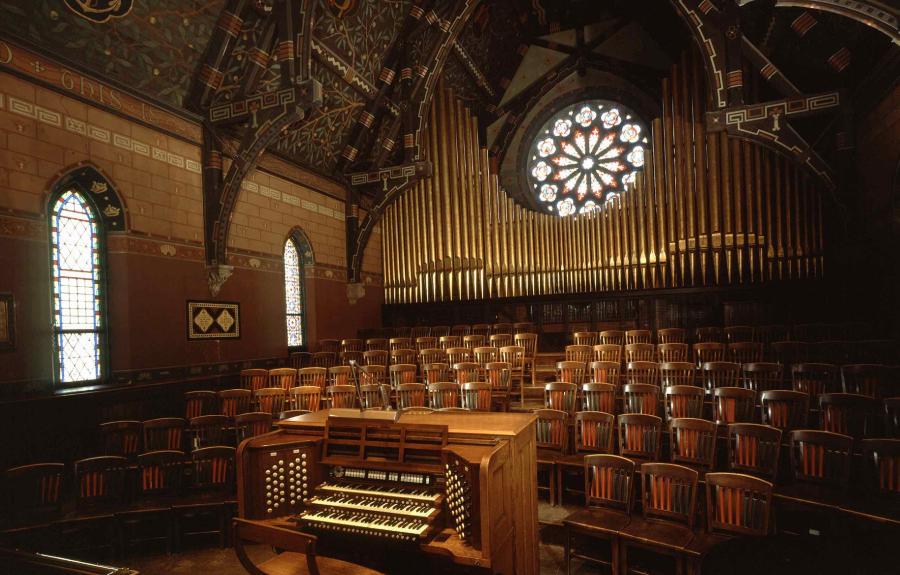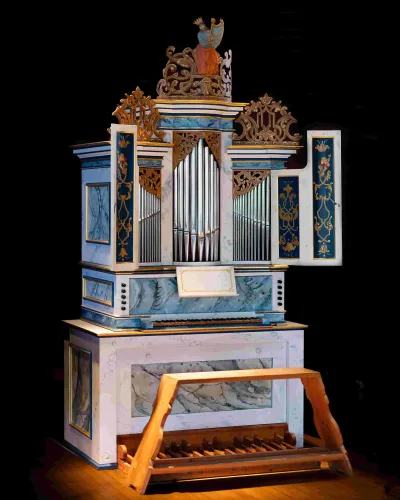Cornell is lucky to have four beautiful organs on campus, each with its own distinct personality, from the historic Aeolian-Skinner (1940) in Sage Chapel to the Cornell Baroque Organ in Anabel Taylor Hall. These instruments are just a part of the vibrant organ scene in Ithaca itself, and the semester recital series regularly ventures off campus, in partnership with various local churches.
Baroque Organ
Commissioned by the Department of Music, and inaugurated in 2010, the organ is a fantasy reconstruction of Arp Schnitger’s 1706 organ for Charlottenburg Palace, Berlin. Built using historical techniques by Munetaka Yokota, researchers from GOArt (Göteborg Organ Art Center, Sweden), and local craftsmen from upstate NY, the organ is a focal point for new and old music on Cornell’s campus, inspiring researchers, performers, and composers alike.
Aeolian-Skinner Organ
This organ was built for Sage Chapel in 1940, under the direction of G. Donald Harrison, and exemplifies his experimentation enroute to establishing a modern “American” style of organ, bringing together neo-Baroque elements, high-powered French-style reeds, and pipework from the chapel’s 1909 E. M. Skinner organ. In addition to numerous solo recitals each year, the organ regularly accompanies Cornell’s choral ensembles in concert.
Neapolitan Organ
This original 18th-century Italian organ was built by Augustinus Vicedomini in 1746. Its meantone tuning and candid pipe speech offer a window into earlier parts of the organ’s history, and allow for both solo repertoire and intimate ensemble performance. It was purchased by Cornell in 2000 from the collection of musicologist, conductor, and keyboard player Alan Curtis.
Dallas Morse Coors Chamber Organ
This is a German chamber organ in the 18th-century style, designed for continuo accompaniment in both instrumental and vocal music. Situated in Barnes Hall, it contributes to solo recitals, lecture demonstrations, and ensemble performances as both soloist in concerto repertoire and continuo instrument.




